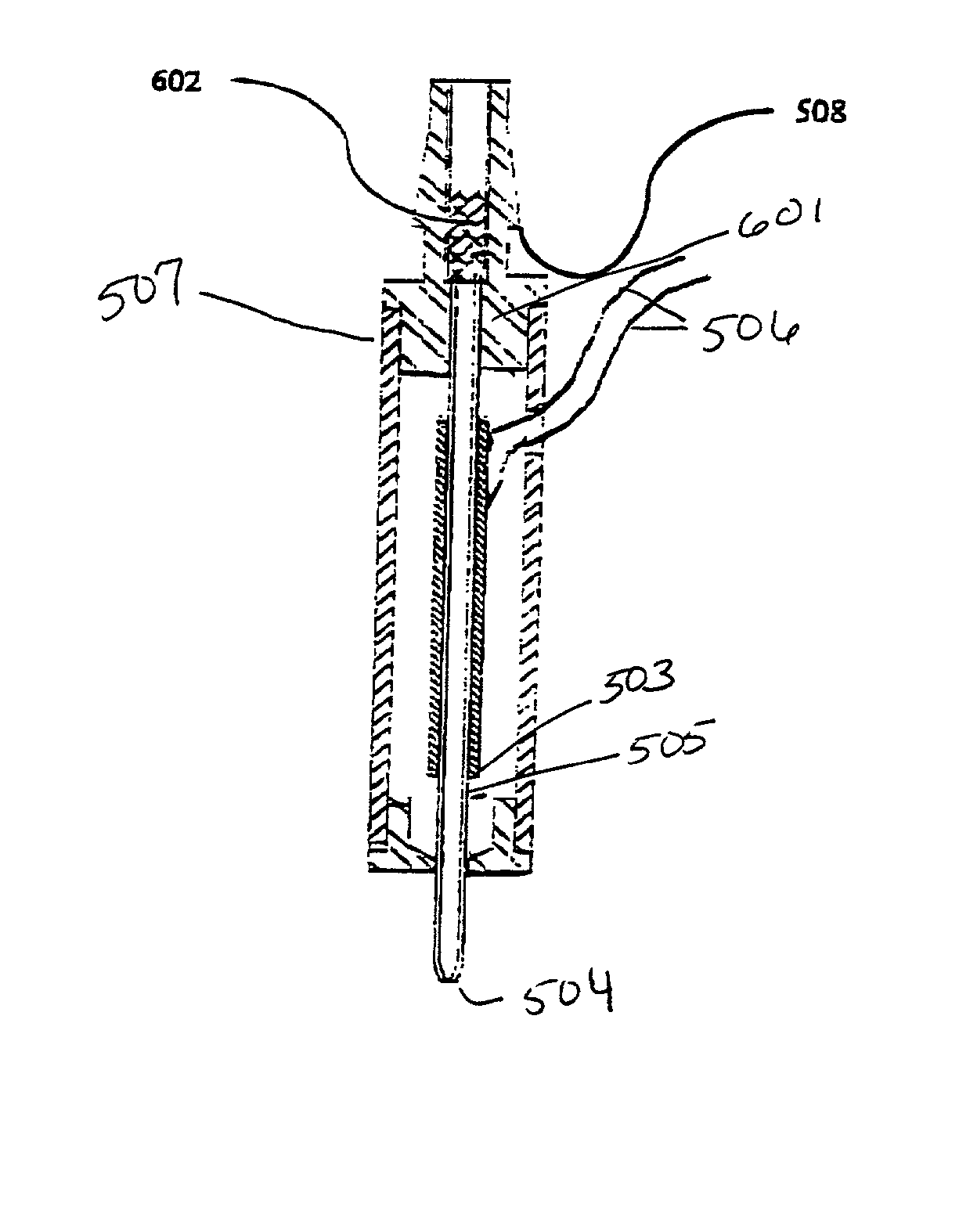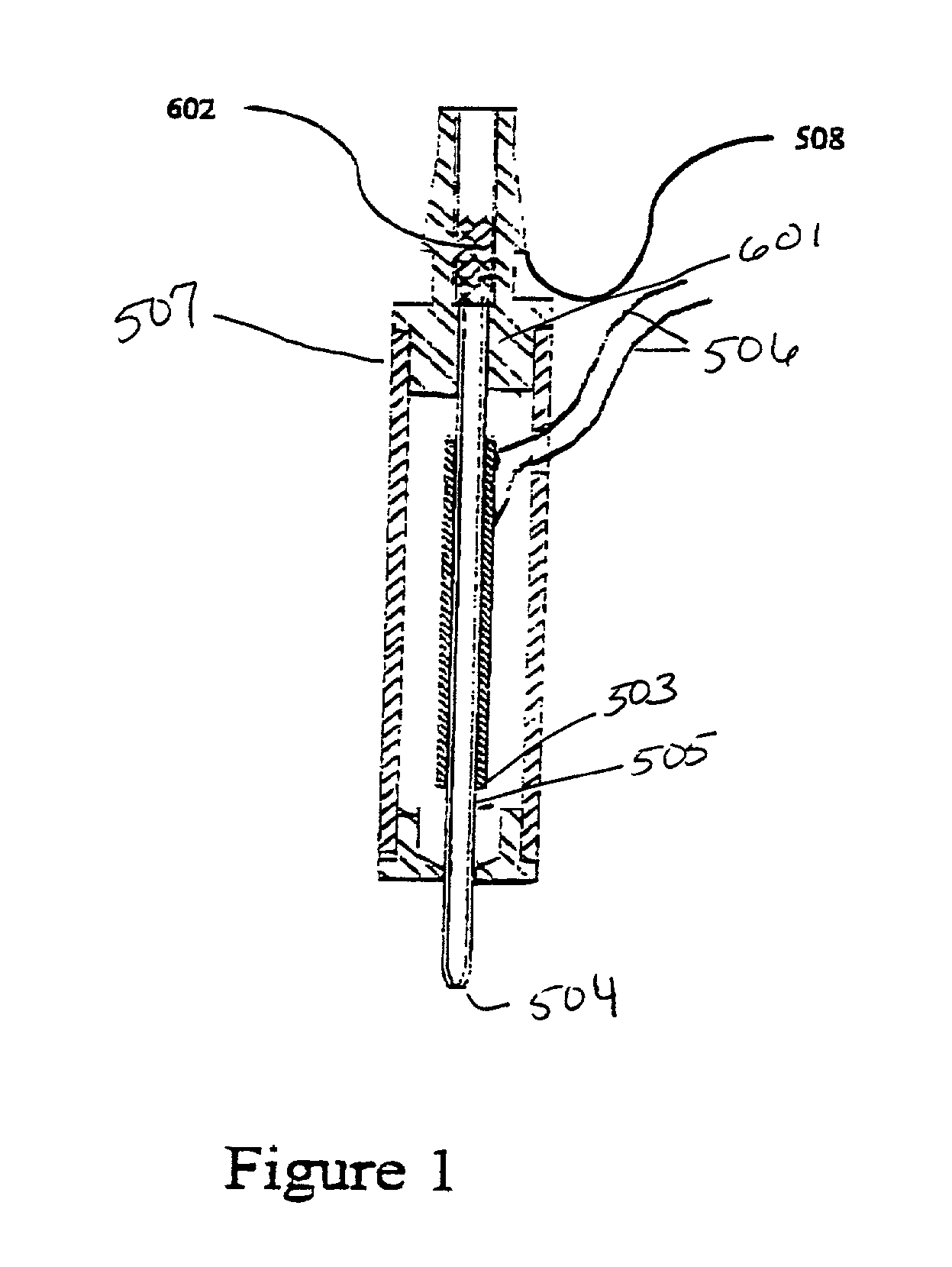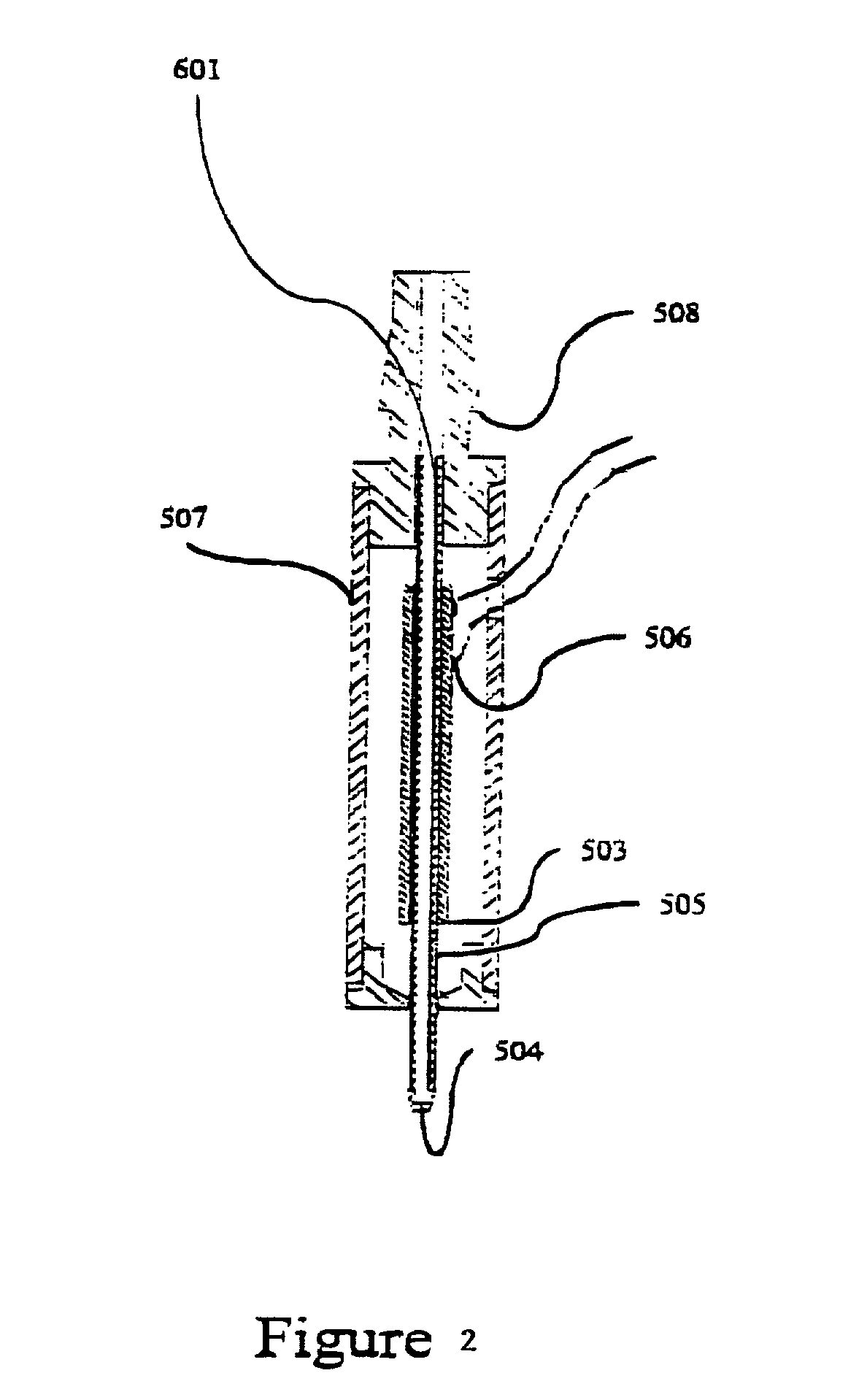Apparatus and methods for high resolution separation and analysis of compounds
a high-resolution, compound technology, applied in the field of microdispensing apparatus for sampling, can solve the problems of not keeping up with analysis technology, present sampling technology has limited use in many of these situations, and the approach of matrix assisted laser desorption ionization (maldi) does not work
- Summary
- Abstract
- Description
- Claims
- Application Information
AI Technical Summary
Benefits of technology
Problems solved by technology
Method used
Image
Examples
Embodiment Construction
Microdispensing Apparatus
[0051] An embodiment of a type of microdispensing device is where collecting means in the form of chromatography packing material is connected to the aperture of the microdispensing device is shown in FIG. 1. A PZT tube (503) is concentrically bonded with a glass capillary jetting tube (505), which comprises an orifice (504) at one end. The leads (506) on the PZT electrodes are for electric connections. This unit is housed within a case (507). A barbed ferrule (508) provides fluid connection, and connects to the LC resin collecting material (601). The length of the collecting material (601) is variable, depending on the requirement of compound separation. The length of the PZT tube (503), and also the length of the glass capillary jetting tube (505), is selected to balance the trade-off between the reduction in dead volume and the gain in piezoelectric driving efficiency (a short tube has smaller dead volume and lower driving efficiency, and visa versa).
[005...
PUM
| Property | Measurement | Unit |
|---|---|---|
| Capillary wave | aaaaa | aaaaa |
| Pressure | aaaaa | aaaaa |
| Volume | aaaaa | aaaaa |
Abstract
Description
Claims
Application Information
 Login to View More
Login to View More - R&D
- Intellectual Property
- Life Sciences
- Materials
- Tech Scout
- Unparalleled Data Quality
- Higher Quality Content
- 60% Fewer Hallucinations
Browse by: Latest US Patents, China's latest patents, Technical Efficacy Thesaurus, Application Domain, Technology Topic, Popular Technical Reports.
© 2025 PatSnap. All rights reserved.Legal|Privacy policy|Modern Slavery Act Transparency Statement|Sitemap|About US| Contact US: help@patsnap.com



